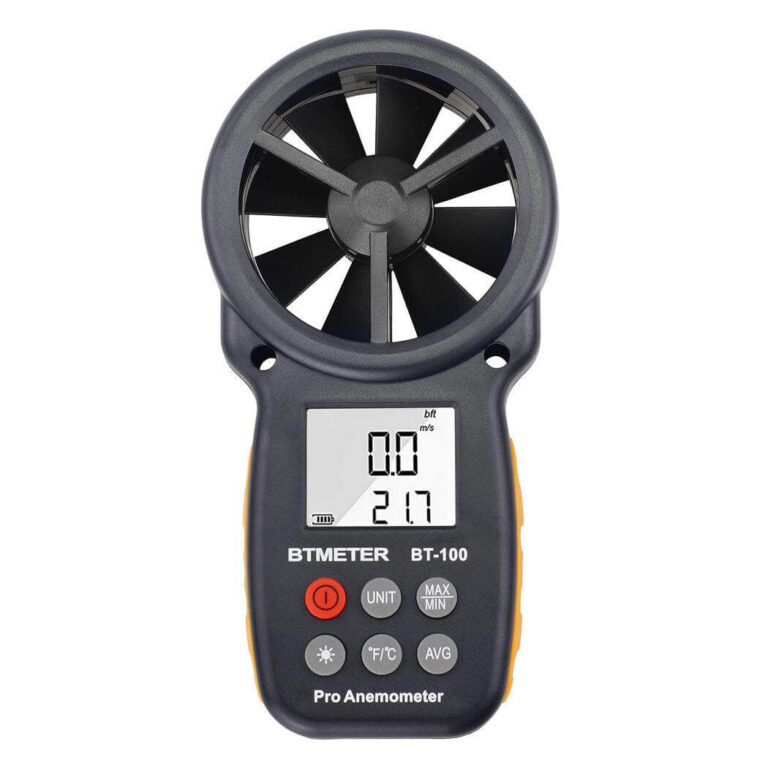Anemometers are essential instruments used to measure wind speed and direction. They are widely employed in various fields such as meteorology, environmental monitoring, aviation, maritime operations, and industrial applications. Anemometers come in different types and designs, each serving specific purposes and environments. In this comprehensive guide, we will delve into the intricacies of anemometers, exploring their principles, types, applications, and advancements in technology.
Introduction to Anemometers
Anemometers, derived from the Greek word “anemos” meaning wind, are devices designed to measure the speed and direction of wind. They play a crucial role in weather forecasting, climate research, and various industries where wind conditions impact operations and safety.
History of Anemometers
The history of anemometers dates back to ancient times when simple devices such as wind vanes and cups were used to estimate wind speed and direction. The first documented anemometer was invented by Italian artist and scientist Leon Battista Alberti in the 15th century. Over the centuries, advancements in technology led to the development of more accurate and sophisticated anemometers.
Principles of Operation
Anemometers operate based on different principles, including mechanical, sonic, and optical methods. Each type of anemometer utilizes specific mechanisms to measure wind speed and direction accurately.
Cup Anemometers
Cup anemometers are among the most common types used today. They consist of three or more cups mounted on horizontal arms, which rotate when exposed to wind. The rotation speed is proportional to the wind speed, allowing for precise measurements.
Vane Anemometers
Vane anemometers, also known as wind vanes, determine wind direction by aligning themselves with the direction of the wind. They typically consist of a vertical shaft with a vane or arrow at one end, which points into the wind.
Sonic Anemometers
Sonic anemometers use ultrasonic sound waves to measure wind speed and direction. They work by emitting ultrasonic pulses between transducers placed at different locations. The time it takes for the sound waves to travel between transducers is used to calculate wind speed and direction.
Pitot Tube Anemometers
Pitot tube anemometers measure wind speed based on the principle of fluid dynamics. They utilize a tube with one opening facing the oncoming wind and another opening perpendicular to the wind flow. The pressure difference between the two openings is used to determine wind speed.
Types of Anemometers
Anemometer come in various types and designs, each suited for specific applications and environments. Some of the common types include:
Mechanical Anemometers
Mechanical anemometer, such as cup and vane anemometer, rely on physical moving parts to measure wind speed and direction. They are durable and reliable, making them suitable for a wide range of applications.
Sonic Anemometers
Sonic anemometer are non-contact devices that use ultrasonic sound waves to measure wind speed and direction. They are highly accurate and suitable for research and meteorological applications where precision is essential.
Hot Wire Anemometers
Hot wire anemometer measure wind speed based on the cooling effect of airflow on a heated wire. They are sensitive to low air velocities and are commonly used in HVAC systems and environmental monitoring.
Laser Doppler Anemometers
Laser Doppler anemometer use laser light to measure the velocity of particles suspended in the air. They are capable of measuring wind speed with high accuracy and are often used in research and atmospheric studies.
Applications of Anemometers
Anemometer find wide-ranging applications across various industries and fields, including:
Meteorology
In meteorology, anemometer are used to measure wind speed and direction for weather forecasting, climate research, and studying atmospheric phenomena.
Aviation
Anemometer play a crucial role in aviation for assessing wind conditions during takeoff, landing, and flight operations. Pilots rely on accurate wind measurements to ensure safe and efficient flying.
Renewable Energy
In the renewable energy sector, anemometer are used to assess wind resources and determine the feasibility of wind energy projects. They help in site selection, turbine placement, and optimizing energy production.
Environmental Monitoring
Anemometer are used in environmental monitoring to assess air quality, dispersion of pollutants, and atmospheric conditions. They aid in understanding the impact of wind on environmental processes.
Industrial Applications
In industrial settings, anemometer are used for ventilation control, stack emission monitoring, and assessing wind loads on structures. They help ensure safety and efficiency in various industrial processes.
Advancements in Anemometer Technology
Advancements in technology have led to the development of more advanced and sophisticated anemometer with improved accuracy, reliability, and functionality. Some notable advancements include:
Remote Sensing Anemometers
Remote sensing anemometer utilize technologies such as lidar (light detection and ranging) and radar to measure wind speed and direction remotely. They offer the advantage of non-contact measurements and are used in applications such as wind energy assessment and atmospheric research.
Wireless Anemometers
Wireless anemometer are equipped with wireless communication capabilities, allowing for remote monitoring and data transmission. They are used in applications where wired connections are impractical or inconvenient.
Miniaturized Anemometers
Miniaturized anemometer are compact and lightweight devices designed for portable and handheld applications. They are used in field measurements, research expeditions, and outdoor activities where mobility is essential.
Smart Anemometers
Smart anemometer integrate sensors, data logging, and connectivity features to provide real-time monitoring and analysis of wind conditions. They are equipped with advanced software algorithms for data processing and interpretation.
Conclusion
Anemometer are indispensable tools for measuring wind speed and direction in various applications and industries. With advancements in technology, anemometer have become more accurate, reliable, and versatile, enabling better understanding and management of wind-related phenomena. Whether in meteorology, aviation, renewable energy, environmental monitoring, or industrial settings, anemometer play a vital role in ensuring safety, efficiency, and sustainability. As we continue to innovate and improve upon existing technologies, the future of anemometry holds promising opportunities for further advancements and applications.

